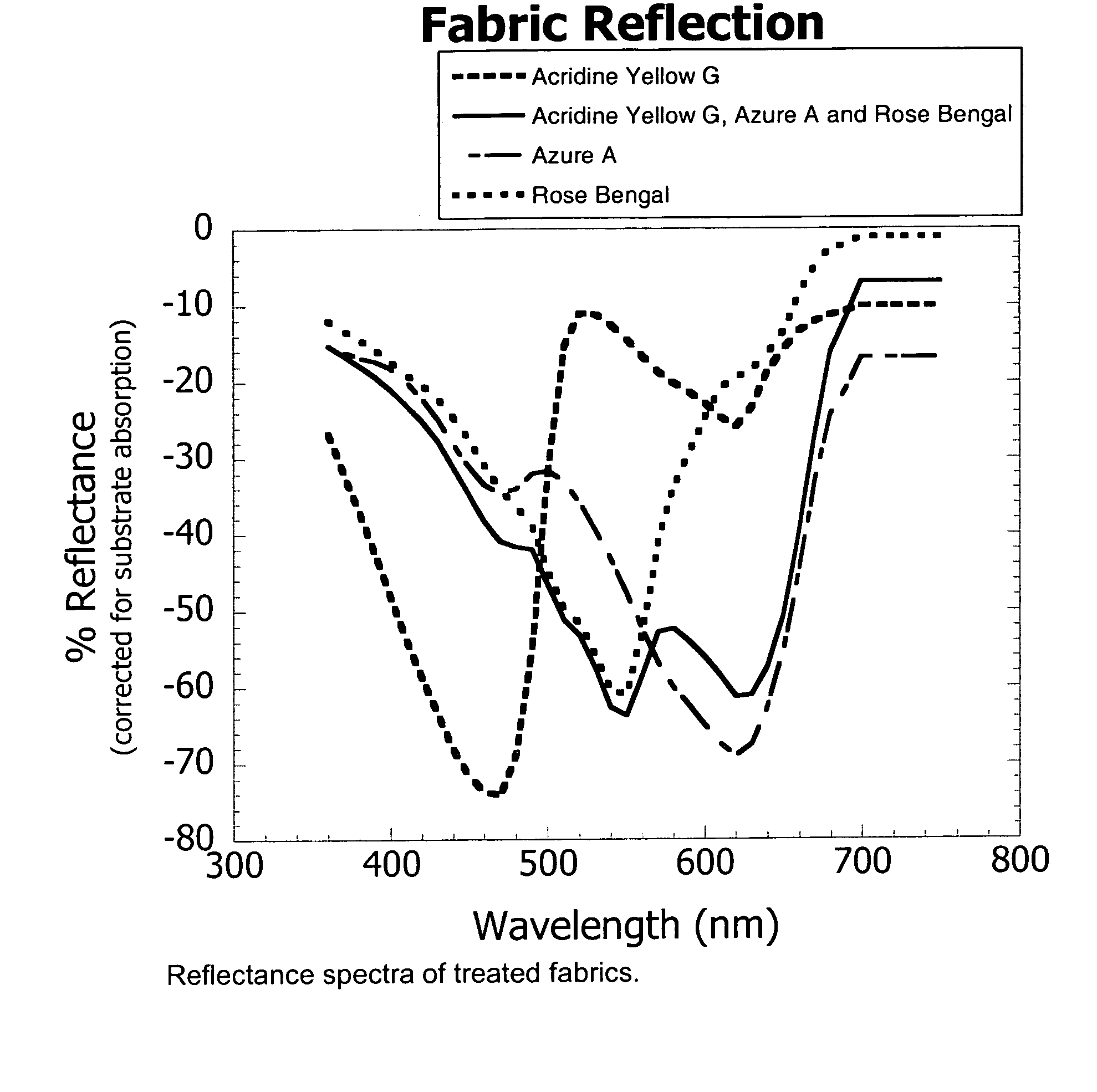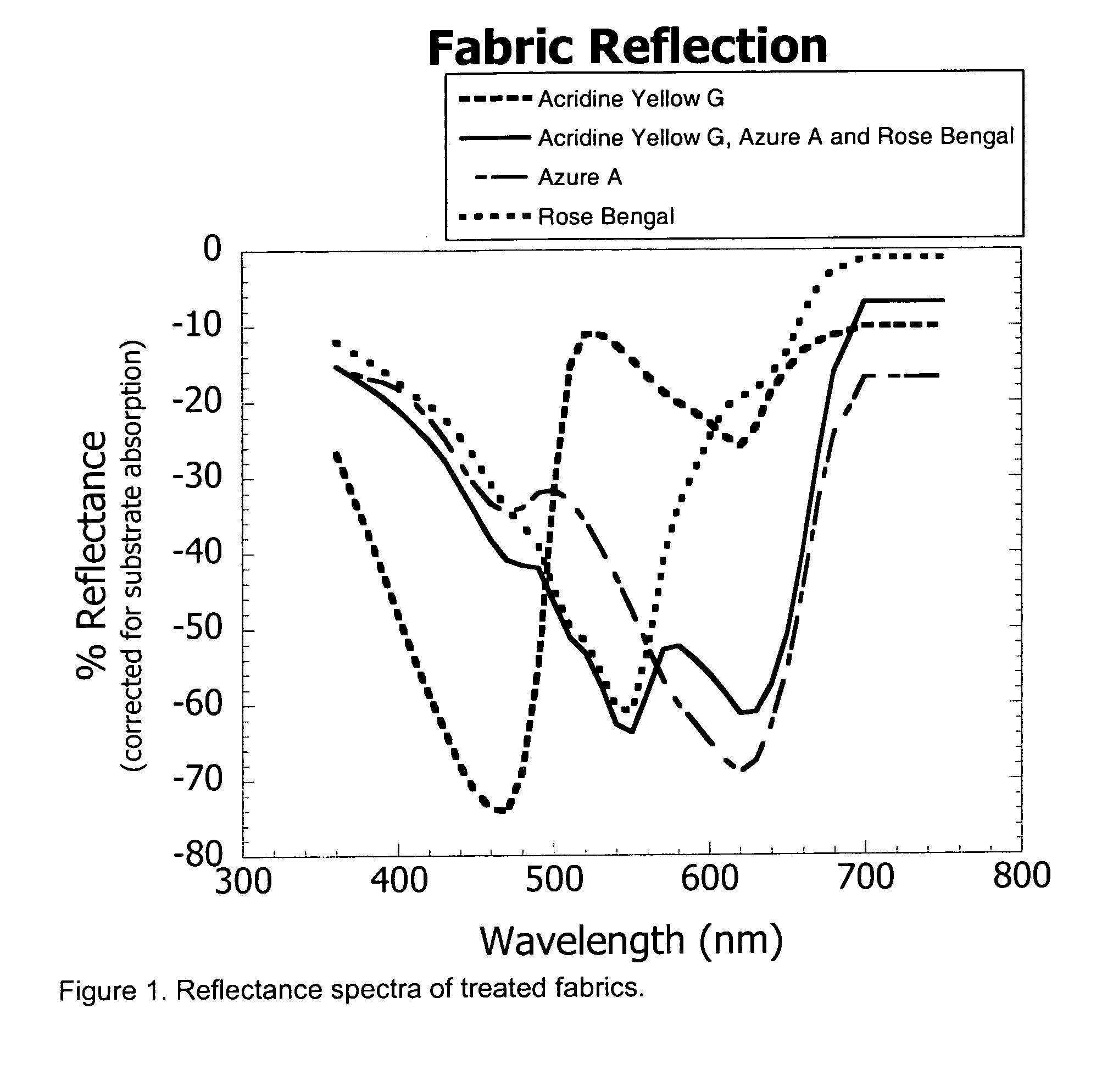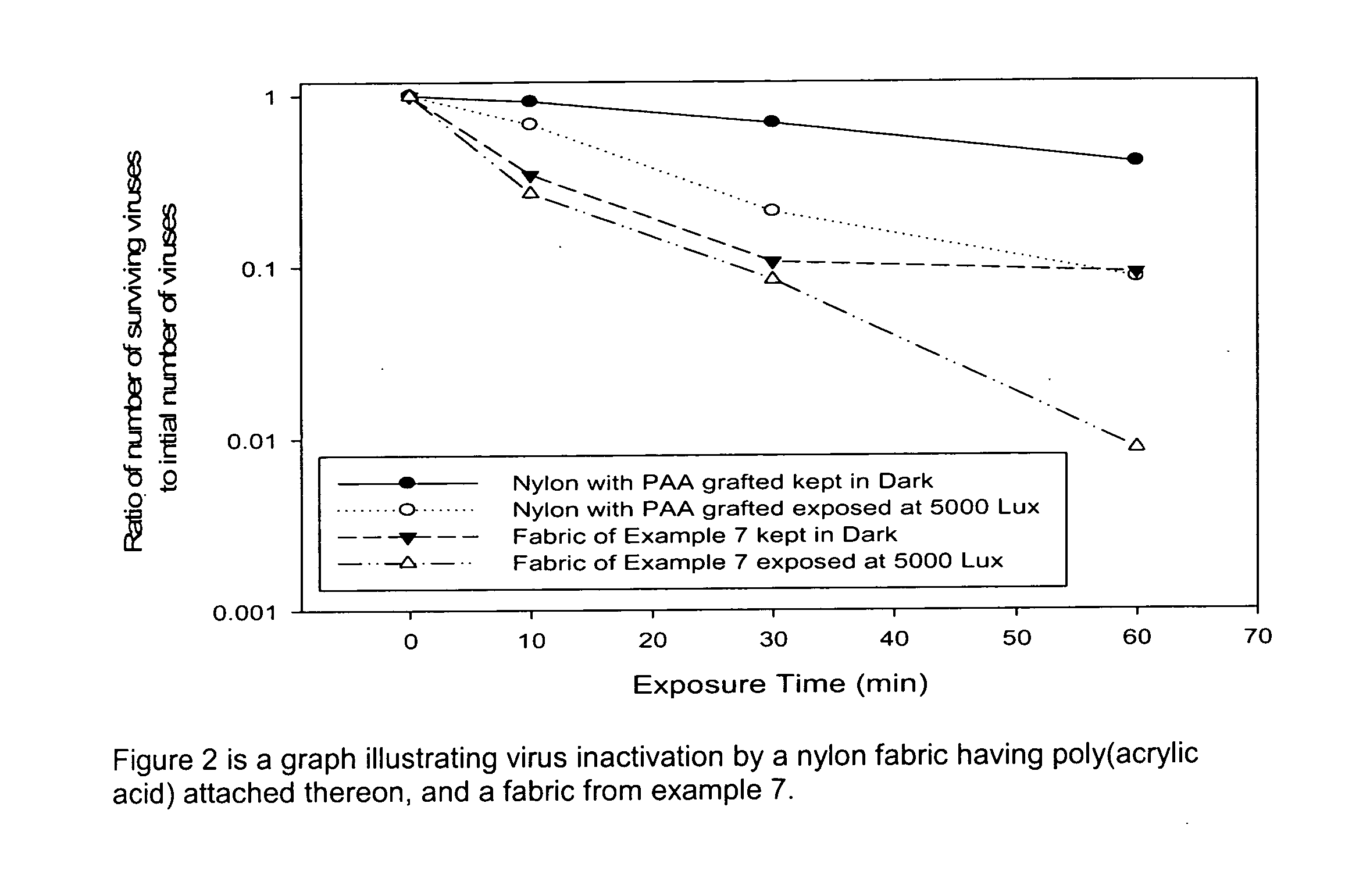Light activated antiviral materials and devices and methods for decontaminating virus infected environments
a technology of light-activated antiviral materials and antiviral materials, applied in the direction of biocide, drug composition, peptide/protein ingredients, etc., can solve the problem that the antibacterial effect of such grafted or bound protoporphyrin materials may not be sufficiently effective against bacteria to be of effective use, and the singlet oxygen generation is not sufficient. problem, to achieve the effect of broad antibacterial effect, the effect of reducing the number of infections
- Summary
- Abstract
- Description
- Claims
- Application Information
AI Technical Summary
Benefits of technology
Problems solved by technology
Method used
Image
Examples
example 1
[0046] Virucidal activity of Zn-protoporphyrin IX (Zn-PPIX) grafted onto nylon (pieces of cloth, size 1 by 1 cm) was tested against infectious vaccinia viruses. The Zn-PPIX grafted nylon fabric was made as follows. Poly(acrylic acid) (PAA) was dissolved in water at a concentration of 1.4 g / L. A piece of nylon fabric was immersed in 35 ml of this solution. 10 ml of an aqueous solution of 4-(4,6-dimethoxy-1,3,5-triazin-2-yl)-4-methylmorpholinium chloride (DMTMM) was added (20 g / L). The solution was gently shaken for 1 hour, the fabric was removed from solution, rinsed with water and dried. The fabric formed had PAA grafted onto its surface. Next, 0.1 g of Zn-PPIX, 0.2 g of DMTMM, and 100 μL of ethylene diamine were dissolved in 120 mL of water and stirred for 30 minutes. At this point, the PAA-grafted nylon fabric was placed in this reaction mixture. Excess solution was squeezed out and the fabric dried and cured at 120° C. for 40 minutes. The resulting Zn-PPIX nylon fabric was obtain...
example 2
[0053] With respect to bacteria with light exposure as described above (Light at 60,000 Lux and Zn-PPIX treated fabric), the grafted materials were somewhat effective on Bacillus strains.
[0054] Two Bacillus strains were used in experiments:
[0055]Bacillus cereus strain by BGSC code 6A5 (original code: ATCC14579), description; wild type isolate, type strain of B. cereus.
[0056]Bacillus thuringiniensis, BGSC No. 4A1; original code NRRL-B4039; description: wild type isolate.
[0057] We tested the extent to which Zn-PPIX treated fabric was able to inactivate Bacillus cereus and B. huringiensis spores to germinate and produce viable vegetative cells. 1 cm by 1 cm pieces of LAAMs (Nylon, PPIX, and Zn-PPIX) were immersed in fresh spore dilution (ABS5800.3) and then exposed to light. The source of light was a tungsten lamp. Light intensity under 60,000 Lux did not have an effect on spores. At 60,000 Lux during the 30 minute exposure, only Zn-PPIX treated fabric had an effect on spores: 20.1...
example 3
[0058] Cerex Suprex HP spunbonded nylon nonwoven (DuPont) with a basis weight of 45 gsm. 2.0 g of poly(acrylic acid) of molecular weight 450,000 was dissolved in 500 ml of water. The nonwoven fabric was pulled through this solution and squeezed between padder rolls to a wet pickup of 135% wt / wt of fabric. The treated fabric was allowed to sit for two days covered with aluminum foil to prevent water evaporation, then rinsed with fresh water six times. Next, an aqueous solution of 4-(4,6-dimethoxy-1,3,5-triazin-2-yl)-4-methylmorpholin-4-ium chloride, DMTMM, consisting of 0.41 g DMTMM in 250 ml water was made up and the treated fabric pulled through this solution and squeezed to remove excess solution. This fabric was allowed to sit covered with aluminum foil for two hours and rinsed 6 times.
PUM
| Property | Measurement | Unit |
|---|---|---|
| thick | aaaaa | aaaaa |
| thick | aaaaa | aaaaa |
| thick | aaaaa | aaaaa |
Abstract
Description
Claims
Application Information
 Login to View More
Login to View More - R&D
- Intellectual Property
- Life Sciences
- Materials
- Tech Scout
- Unparalleled Data Quality
- Higher Quality Content
- 60% Fewer Hallucinations
Browse by: Latest US Patents, China's latest patents, Technical Efficacy Thesaurus, Application Domain, Technology Topic, Popular Technical Reports.
© 2025 PatSnap. All rights reserved.Legal|Privacy policy|Modern Slavery Act Transparency Statement|Sitemap|About US| Contact US: help@patsnap.com



